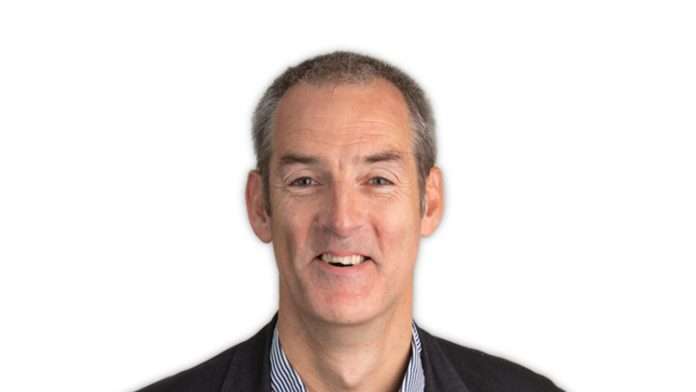Founded in 2008, ViClarity was created to help regulated industries streamline their governance, risk and compliance (GRC) processes through automation and consulting services.
Prior to establishing ViClarity, Ogie Sheehy had worked for large corporates such as IBM and Dell. During this time, he had worked as a director IT and had experience a lot of long software development cycles, and saw the complexity as it related to software applications.
He also saw a lot of remaining dependency on very manual processes, which were often supported by Excel spreadsheets. “While Excel is a wonderful tool for lots of things, it brings with it some drawbacks and challenges as it relates to other areas,” exclaimed Sheehy.
Sheehy – who serves as European CEO and global CIO – said that he had a lot of passion around risk management and compliance. “I guess where the concept came from was a simple product that was easy to implement, which was cost effective and easy to use by the end user but did not need users to depend on Excel as much as it is related to processes for risk and compliance management.”
Sheehy started working in the Irish market with some credit unions as the company’s first outing, and he highlighted that early on he realised that many financial institutions, even back then, had a lot of regulatory burden – with a lot of new regulations coming out and a lot of things they needed to understand and comply with.
As the industry regulators started to get more active and do inspections within financial institutions, Sheehy realised the industry needed tools and products that were simple and cost-effective to comply with regulations in a more efficient way.
When ViClarity came to market, Sheehy said he realised that compliance was a big area. “We have a highly secure, cloud web-based product that allows users to log in to a portal and see all of their compliance obligations and then go to an assessment which provides a full audit trail of date, time and the individual who is accountable for that area of compliance, and then it presents the information back to the user.”
However, Sheehy underlined that over the years, the firm has developed the technology to take a much broader footprint. “We also do risk management now, which is your risk register online, where all your risks are available, and you can see the top risks in your business very simply and very visually. Alongside this, you can also drill down within the technology to who is, for example, the risk owner or who is the person responsible for testing controls and it links all of the components of the software together within the technology.”
The business also has vendor management and outsourcing management products and also has a platform that allows users to automate the due diligence cycle, so that all of the questions involved in a due diligence questionnaire can be sent to a vendor or multiple vendors.
“From our perspective, ViClarity is providing a solution to a business or a client whereby they can have all of their components of their overall enterprise risk management solution in one place – so a kind of central repository for all of your risks.”
Pain points
Some of the chief pain points that ViClarity is looking to solve once again revolve around the high dependence on Excel. “Some of the biggest financial institutions across the world still today will use Excel in a heavy way – and that brings significant challenges in terms of the time it takes.”
Sheehy provided an example of when there are multiple branches within a financial institution, prior to ViClarity you would be emailing each of the branches a spreadsheet, the branches would then download the spreadsheet from the email and then provide the answers in an Excel spreadsheet, save it and email it back. “If you have 15 to 20 branches, that is a lot of work, it’s a lot of time and there are a lot of costs involved – nevermind it being prone to human error,” he said.
“So, the problem we are solving is we’re working with organisations to provide them with automation, we can build your checklists and workflows into the ViClarity product and we can automate the cycle for when that goes out, whether it is monthly or quarterly.
“We provide a scheduling tool that allows somebody to sit back and plan their compliance checks for the months ahead and their audits for the year ahead – and the software does all of that heavy lifting, notifying the end user when an audit comes due. They then log this in the portal and they can upload all of the information.”
Sheehy goes on to emphasise that one of the big pain points ViClarity solves is that, when all the data comes back to either a chief risk or chief compliance officer, it now comes back into screen and consolidates all the inputs together with full individual audit trail per audit and gives the full view.
“You can quite easily see trends within your financial institution, either over time or across multiple branches or entities, and you can identify those very quickly as all the data is correlated together in one visual screen – enabling you to see the wood from the trees.”
Another issue that ViClarity is providing solutions for is linked to providing better insight efficiency through its data. “A problem when you get multiple spreadsheets back is the time it takes just to collate the data together in order to identify a couple of data points that you need to do something about.
“So, in the technology it is really moving away from manual processes, saving time and subsequently saving money or providing a really robust tool where users can see all of their data in one place.”
ViClarity’s USP
Sheehy exclaimed that when he set the company up, he built it from the ground-up and grew it organically – stating that he worked in partnership with its earlier-stage clients to understand their pain points, and didn’t go and build a massive platform and then go to sell it, instead building it up over time.
“I think one differentiator is that we’re not just a one-stop-shop for risk management or compliance, we have a breadth of tools and solutions available within the ViClarity product. So the system can be one software system, one software engine to drive all of your enterprise risk compliance, vendor audit solutions in one place – which I think is unique.
“A lot of other companies will typically specialise in one area, or even in one vertical within financial services. For us, however, we’ve got the software capability to cover a breadth of solutions within broader sectors.”
Another key differentiator in the opinion of Sheehy is that the company’s offering is softly engineered. “What softly engineering means is that you’ve got the ability as a customer to customise the software to fit your processes. I’d see a lot of products on the market that are very rigid and very out of the box, where you have to fit your processes around the software. We come at it from a very different perspective and look at the internal processes within the business.
“From here, we allow you to let the product and the software work within your processes – allowing you to customise it to really be your own.”
The last differentiator for ViClarity is that it focuses very heavily on the end-user. This centers around simplicity and ease-of-use, with the company spending a lot of time on the user interface to ensure that end users find it intuitive and simple and straightforward.
RegTech trends
The RegTech sector is currently undergoing a significant development as more and more companies turn to regulatory technology to support their risk and compliance processes. With these developments, the trends most keenly found in the sector are changing.
According to Sheehy, some of the key trends standing out right now are that people are spending more time looking at technology to automate more time-consuming and cumbersome manual-type processes that may slow a company down and make them less efficient.
Globally, a key trend highlighted by Sheehy is the remote working trend. “We’re seeing more people are interested now in collaboration software tools that help them to do their jobs better.”
He also suggested holding people accountable in teams is a big development. “This is really a core trend that we are seeing. Organisations are more interested in having people now carry out functions and become more accountable at a global level. So, software is a great way to enable us to drive that kind of a culture where people feel that you can work remote but you have to be held accountable for your tasks.”
What’s next?
What is next for ViClarity? A key watchword for the company is partnerships, particularly the ones with their clients.
Sheehy explained, “We’re all the time learning what they do and don’t like about our products. In addition, from a technical perspective, on the technology roadmap, we’ve got an extensive suite of features and functions that we’re developing, and they fall into pockets such as like functional enhancements, security enhancements.”
While the company was founded in the southwest of Ireland, the business now has a global footprint, with its US headquarters in Des Moines, Iowa. “US growth within financial services is a huge strategic goal for us for this year. We also aim to continue to work within Europe and grow that market, but also then to really focus on how we can bring the technology to the global markets.
“I think this global growth is really part of the major part of our strategic goals and objectives, while maintaining the product and maintaining the core principles of the products, which is bringing value to the clients, understanding the client’s needs, and really developing the tech to be simple, and yet incredibly effective.”
Keep up with all the latest FinTech news here.
Copyright © 2023 FinTech Global











